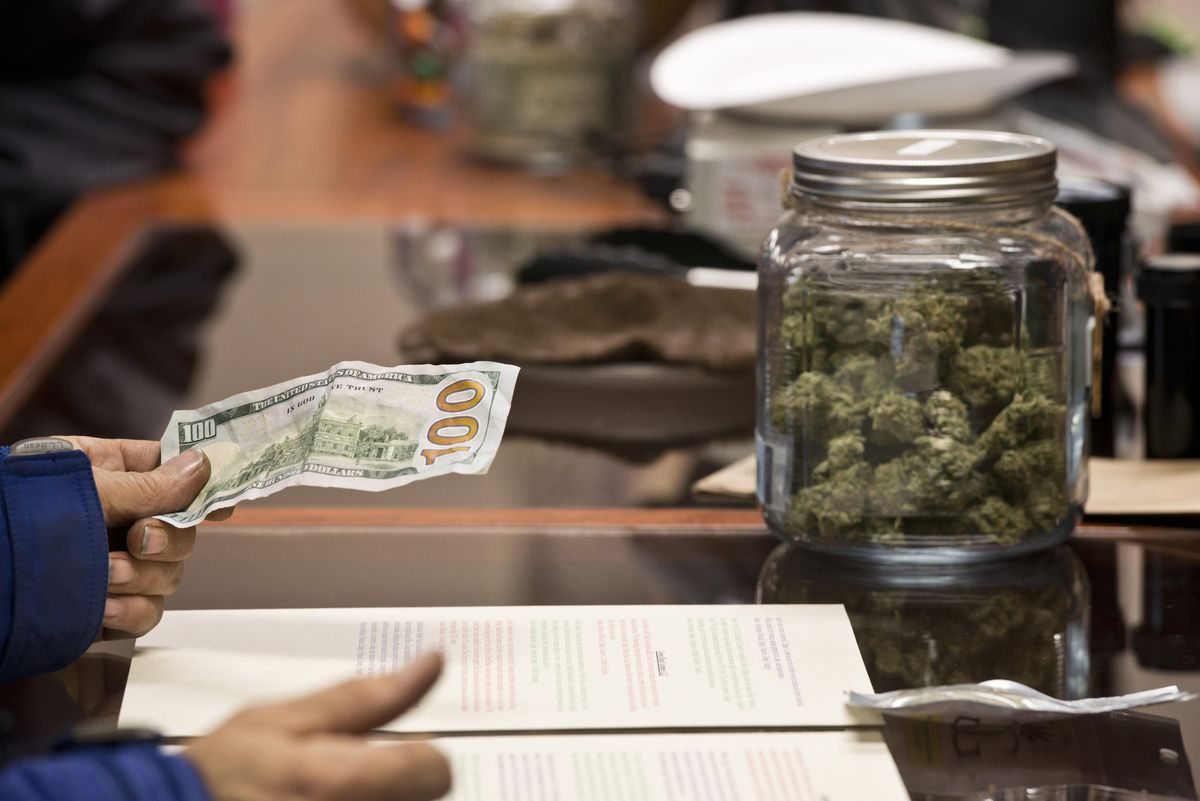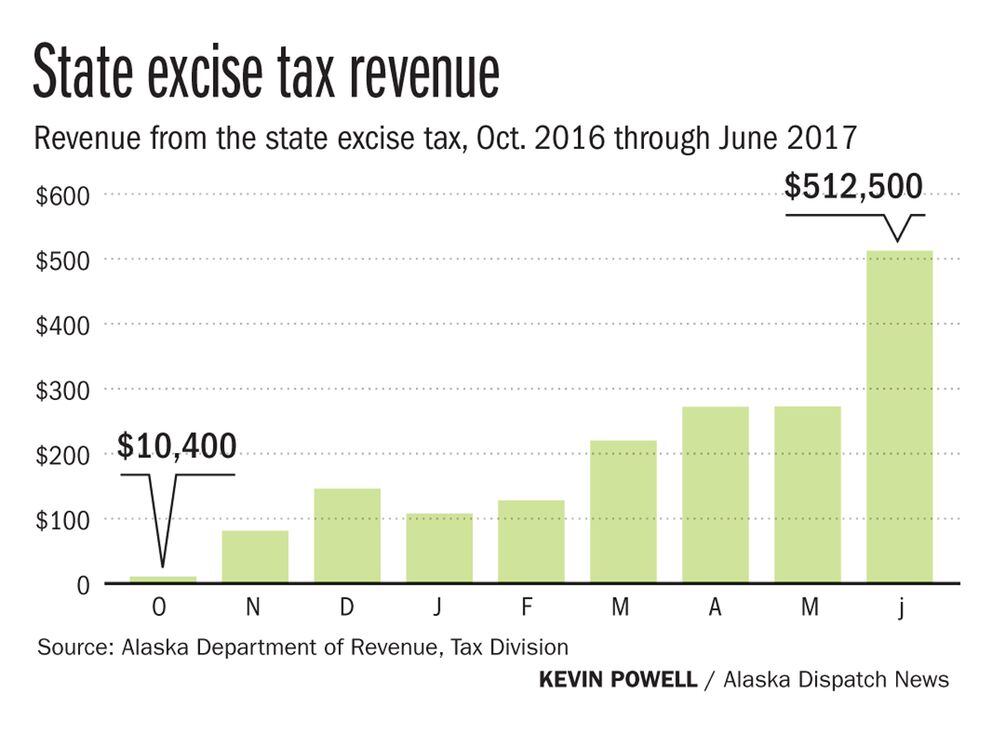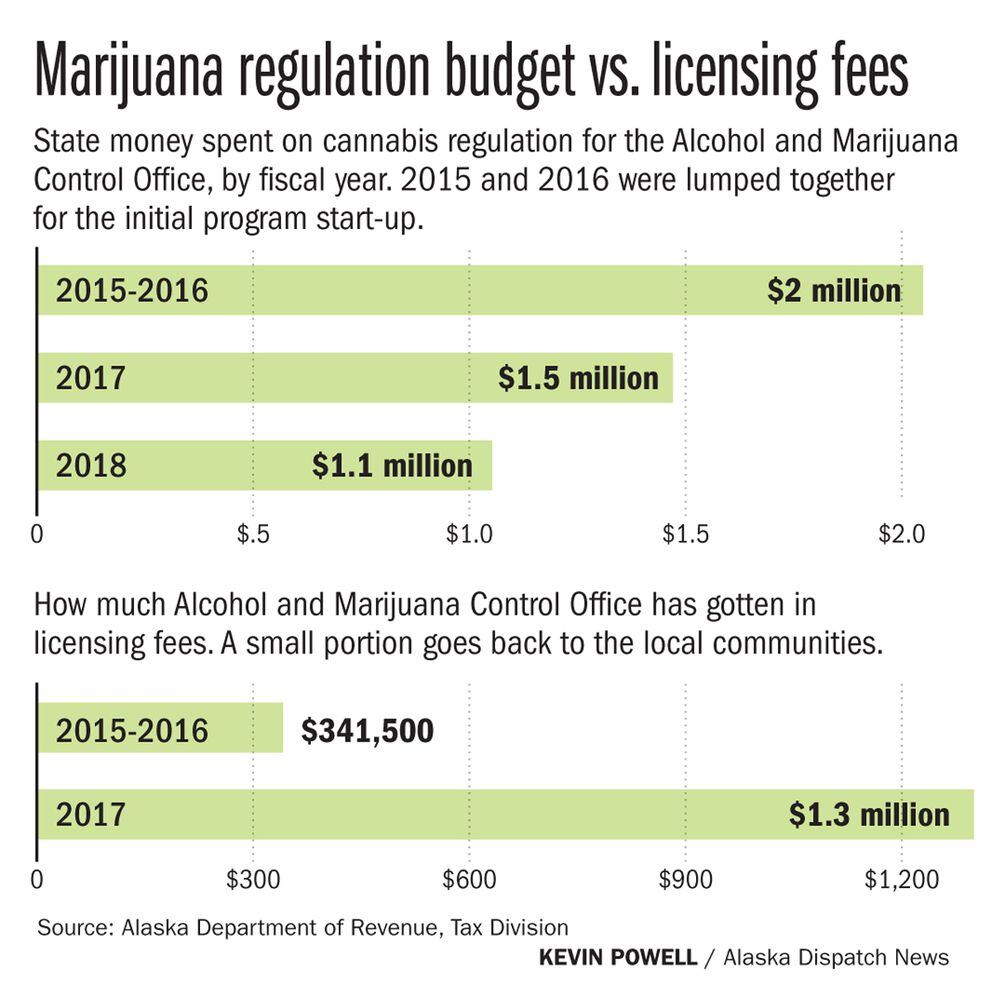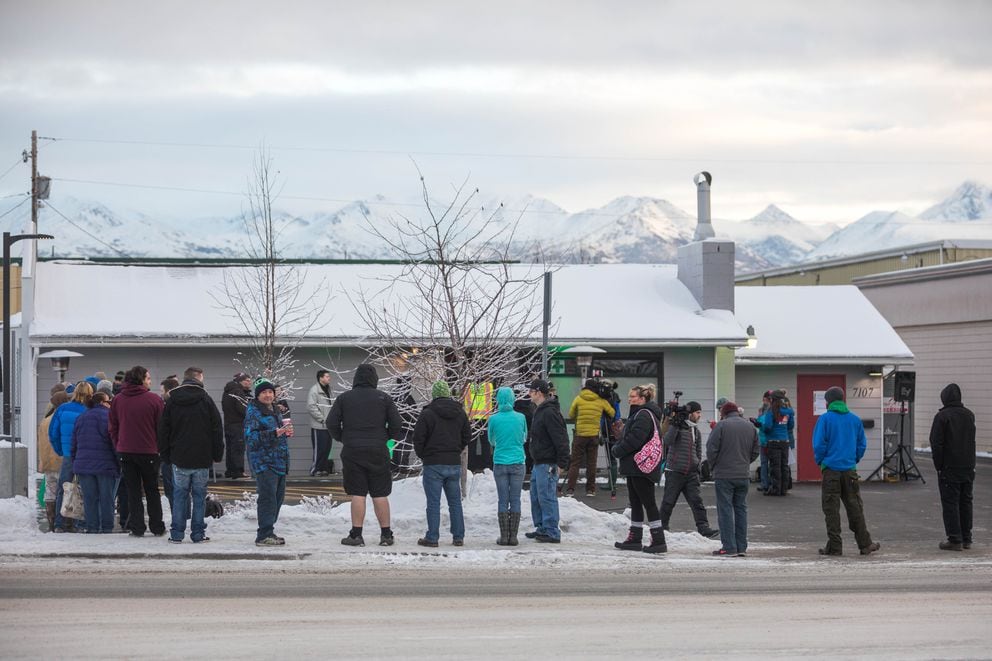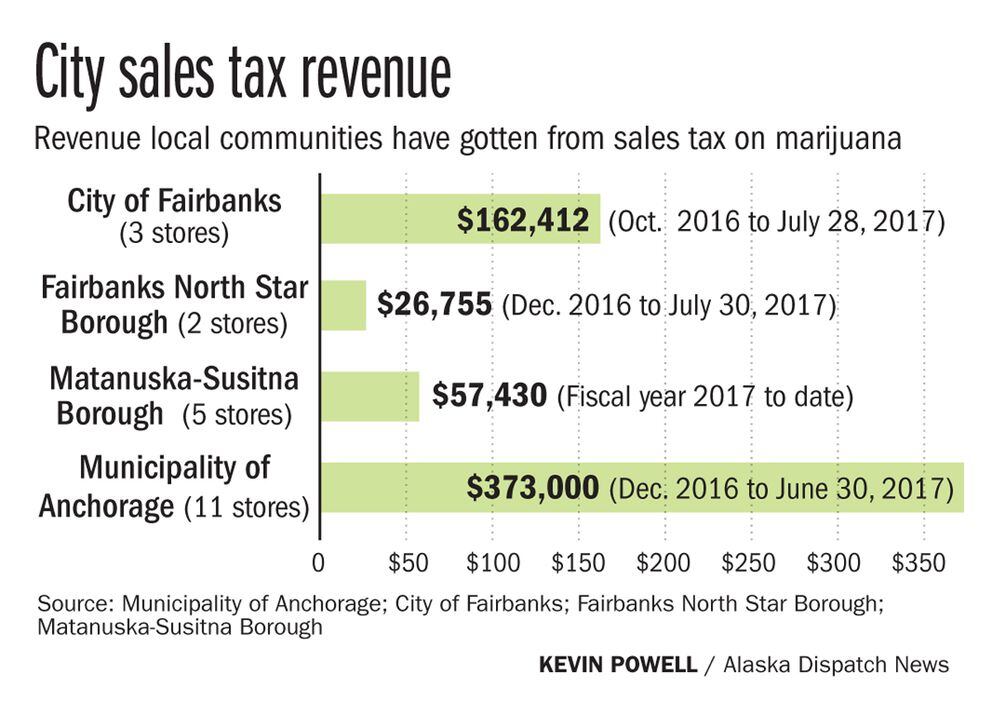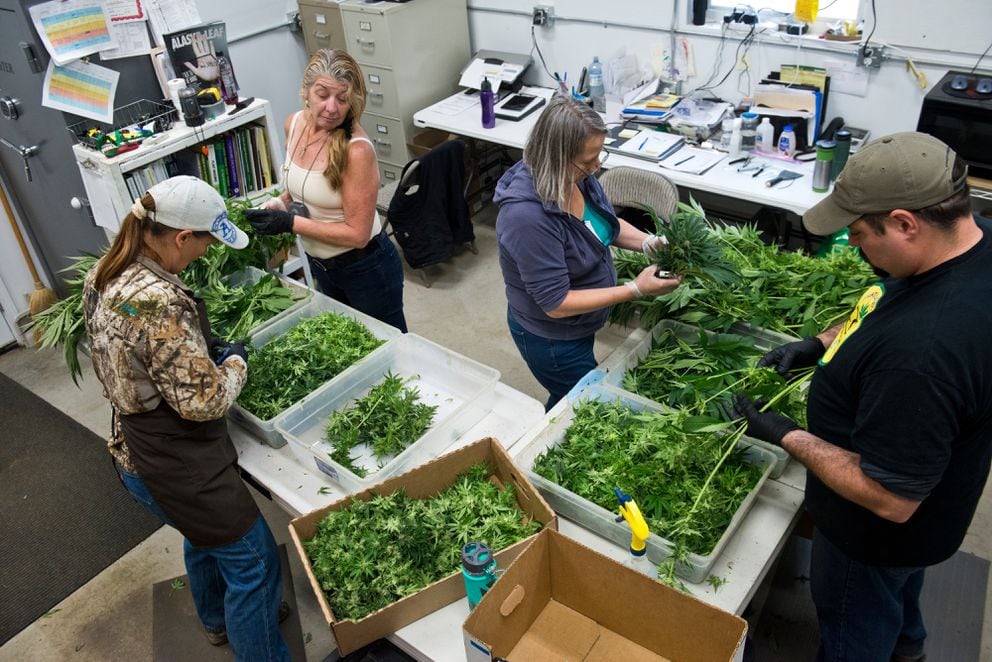The potential for government revenue is one argument people make in favor of commercializing marijuana. But in Alaska, is it true? Or do the resources spent on regulating marijuana outweigh the money coming in?
Let’s take a walk through the numbers.
The state’s first marijuana growers got up and running last summer. By late September, the first harvests were underway.
From October through the end of June, 1,857 pounds of marijuana and 1,099 pounds of trim were sold wholesale, according to the Alaska Department of Revenue’s tax division.
Together, those pounds of pot generated $1.75 million through the state’s excise tax for the fiscal year 2017, which ended June 30.
But in terms of balancing budgets, the state’s excise tax is only part of the story.
Millions in and millions out
The Alcohol and Marijuana Control Office regulates Alaska’s cannabis industry, and its budget for this new fiscal year is around $1.9 million for marijuana regulation.
The intent is that, eventually, marijuana business fees will fully fund the agency — the same as alcohol.
In the meantime, general fund money is being used to make up the rest as the cannabis industry slowly moves forward.
For the fiscal year 2018, marijuana regulation was budgeted $1.1 million from the state’s general fund. The remaining $800,000 will come from money collected on fees, according to Erika McConnell, the agency’s director.
Total fees were actually higher — $1.3 million collected for the fiscal year 2017 — but some money goes back to local governments, and any money not spent will roll over into later years, McConnell said.
All told, from 2015 to June 2018, $4.57 million has been budgeted from the state’s general fund to regulate marijuana.
McConnell estimated that the agency will be self-supported by 2020.
Also, the office is expanding; McConnell hopes to add three staff members this year.
That leads us to the question of resources: How much time is going into this?
Tick tock
The question of resources is more difficult to quantify. Not all agencies keep track of time spent specifically on marijuana-related tasks.
McConnell said about half her office’s time is spent on marijuana. But in September, the staff at the Alcohol and Marijuana Control Office said the new industry was “a ton of work” and that the agency was shorthanded.
“It is not every day that a community or a state brings an entirely new industry into being, so there are challenges that relate to that simple issue,” McConnell said this month.
The Alaska Department of Revenue’s Tax Division is the agency that handles the money coming in through the state excise tax.
“Roughly speaking, we’ve got the equivalent of one full-time person on marijuana,” said director Ken Alper. That’s roughly $100,000 in annual salary and benefits, he said.
Many people in both state and local government echo the same sentiment: Those first months spent figuring out how to regulate the new industry were tough. But now, systems are in place and the workload is lessening.
In September, Anchorage’s Planning Department also said it was inundated with work relating to the new industry.
“When marijuana regulations were just beginning and we were still feeling out the process … certainly, we were spending much more time helping applicants through the process than we were making on (Anchorage’s) $1,700 application fee,” Dave Whitfield, acting current planning manager, said on Wednesday.
But that work has dropped off, Whitfield said.
“It’s going really well,” Whitfield said: One planner in the office has taken the lead on marijuana regulations and spends 15 to 20 hours a week on industry issues.
“Startup was a learning curve for everyone. I know the industry was frustrated with the process, but in our defense, we were learning right along with them,” Whitfield said.
All told, Anchorage has received $100,300 in application fees from cannabis businesses, according to Hal Hart, planning director.
Money to local governments
Some local governments have also put additional taxes on all marijuana sales.
In Anchorage, voters approved a 5 percent sales tax. Between December 2016, when marijuana sales began in Alaska’s largest city, and the end of June, those stores collected just less than $373,000 for the city’s general fund.
The Matanuska-Susitna Borough collected $57,430 for the fiscal year 2017 with its tax of 5 percent, said Patty Sullivan, borough spokesperson.
The city of Fairbanks, also with a 5 percent tax, collected $162,412 from October 2016 through the end of July, said Teal Soden, communications director and executive assistant for the mayor’s office.
Soden called the tax a “positive boost” for the city, which had “definitely exceeded original expectations.”
But the Fairbanks North Star Borough only brought in $26,755 for that same time frame — not a huge amount, noted Peggy MacDonald, treasury and budget manager for the borough.
Some local governments — Ketchikan Gateway Borough, Kenai Peninsula Borough and the City and Borough of Juneau — declined to release information about how much money local taxes have brought in, citing a low number of businesses.
Juneau finance director Bob Bartholomew did say that the sales tax collected on marijuana was “in the ballpark” of $50,000 for the fiscal year 2017. Juneau levies an 8 percent sales tax on cannabis, the same as on alcohol.
‘It won’t be a question’
Dollynda Fleck-Phelps has been doing some of her own research. Fleck-Phelps is the co-owner of Peace Frog Botanicals, a cannabis growing facility on the Kenai Peninsula.
For the past few years, Fleck-Phelps has been surveying marijuana businesses in the borough. In June, 34 businesses weighed in on various questions. All the numbers are self-reported estimates and have not been verified.
The businesses say they’ve spent $5.6 million on the development of property — things like renovations, plumbing, and security equipment. Operating expenses for all the businesses come to $3.4 million a year.
Eighty-six jobs have been created on the peninsula, Fleck-Phelps said. And she estimates that once all the stores in the queue are up and running, $300,000 in sales tax will be brought in each year.
With the information, Fleck-Phelps has created a presentation that she gives to various organizations, like city councils, that she hopes will show the industry’s effect on the local economy.
“I think we could have a really good industry here,” Fleck-Phelps said.
Some in the marijuana industry say that the state has moved too slowly and more money could be coming in if the process were faster.
“When the industry matures and is operating at full speed, then it will be dynamic,” said Cary Carrigan, executive director of the Alaska Marijuana Industry Association. “It will be enough money coming in that it won’t be a question whether we should have a marijuana industry or not.”
McConnell, of the Alcohol and Marijuana Control Office, points to the fact that Alaska is the only state to truly build an industry from scratch, whereas other states had existing medical markets. The agency hit all its deadlines for writing regulations, she wrote.
“Once the regulatory system was established, could we have been faster if we had had more staff? Probably, but remember that a brand-new system was created that everybody had to learn,” McConnell said.
Link – Alaska Dispatch News

